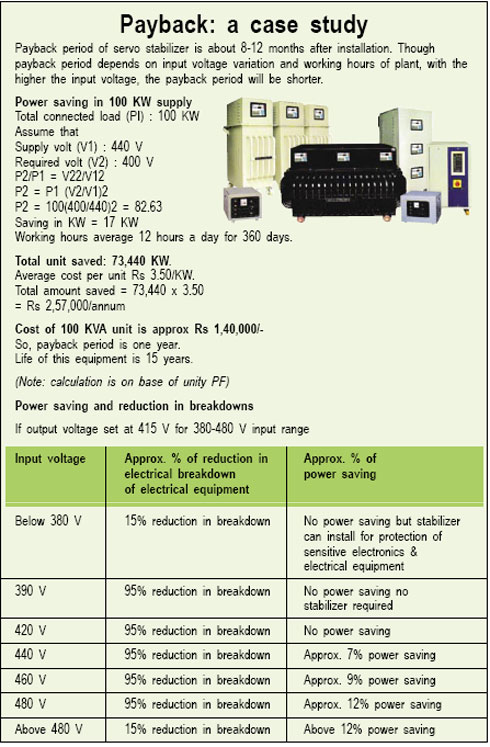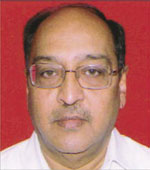|
Focus
Importance of constant
power supply in printing industry Presently, machine manufacturers are developing highly sophisticated printing machines. Combination of mechanical and highly electronics controls on speed and paper printing requires constant power supply maintaining high level of protection. So, it is very important for printers to select proper design of stabilizer in terms of capacity as well as on protections. Vinay Nagar, managing director of Nagar Electronics & Instruments Pvt Ltd, New Delhi, points out some of the most vital aspects in this regard, while enumerating on servo stabilizers.
Servo voltage stabilisers are very reliable and economical method of stabilising mains voltage variations of wider range. Its proven technology, combining solid electrical engineering with electronic sensing and control, gives a continuous, smooth and very stable output voltage of ± 1%. These stabilisers contain some moving parts, which require a small amount of low-level maintenance after a long period of time. Even with moving parts, this is a far more reliable method of stabilising voltages than other method of stabilizing main line. Servo stabilizer not only supply regulated supply but also provide lot of protections like high/low voltage cut off, overload protection, single phase preventer and cut off in case of high temperature. Such protections are very essential for costly printing machines. Due to high level of competition, manufacturing activities of servo stabilizer has gone in unorganized manufacturing sector who are compromising on quality and protections. Like designing of servos with double wound variacs, linear variacs and compromising on quantity of oil. Actually, ‘Servo Stabilizer’ is an automatic voltage regulator which regulates the output voltage with the help of by-directional motor and electronic controller keeping output voltage within ± 3% to 4%. There are three to four topologies of manufacturing AVR (automatic voltage regulator). Most common and accepted technology is auto transformer in series with buck/boost transformer. Servo stabilizer using variacs in series with buck/boost transformer is very sturdy and widely used design using microprocessor control circuit. Life of such design is not less than 10 to 15 years. 
Few manufacturers are adopting double wound transformer to make it economical design. In some application where load is not very high and voltage range is very less, such designs are acceptable but in higher capacity and wider range these designs are very dangerous. Double winding on variac is dangerous in wider range. At low voltage, rise in temperature is very high ranging from 40º to 50º above room temperature. Such designs are not long lasting as the continuous high temperature breaks insulation of insulating wire. Life period of AVR using double wound variac is not more than two to three years while average life of servo is more than 10 to 15 years. Another design is linear type variac where motor converts rotatory motion to linear motion with the help of cycle chain. In this case, correction rate is very low which requires longer time in output correction. This type of AVR has very poor regulation. One can use this AVR in the application where voltage ‘boosting’ or ‘bucking’ is required but not fast regulation. This design is very suitable above 1000 KVA when input supply is through 11 KVA line using step down HT transformers and input voltage is available between 40 V to 470 V. But such designs are not suitable for printing machines where microprocessor and highly sophisticated electronic equipments are used. Fourth type of design is static stabilizer using switching technology with the help of SCR and IGBT. In this case, output correction is within ± 10%. There is advantage of input isolation but in higher capacity, its cost is very high. Basically, it is ‘tap changing technique,’ which due to surges and transients on the mains supply are prone to failure. Due to high cost of switching device; its servicing cost also goes very high. Technically, it is advisable to connect combination of servo stabilizer with isolation transformer on the main line for getting well regulated power supply for the printing equipment. Manufacturers also recommend CVCF (Constant Voltage Constant Frequency) supply of suitable capacity in the electronic section of printing machine. This provides not only ‘true’ sinewave regulated output with isolation but also removes spike and distortion from constant supply and provides longer life to all PCBs of printing machines. nnn
|
 Vinay Nagar
Vinay Nagar